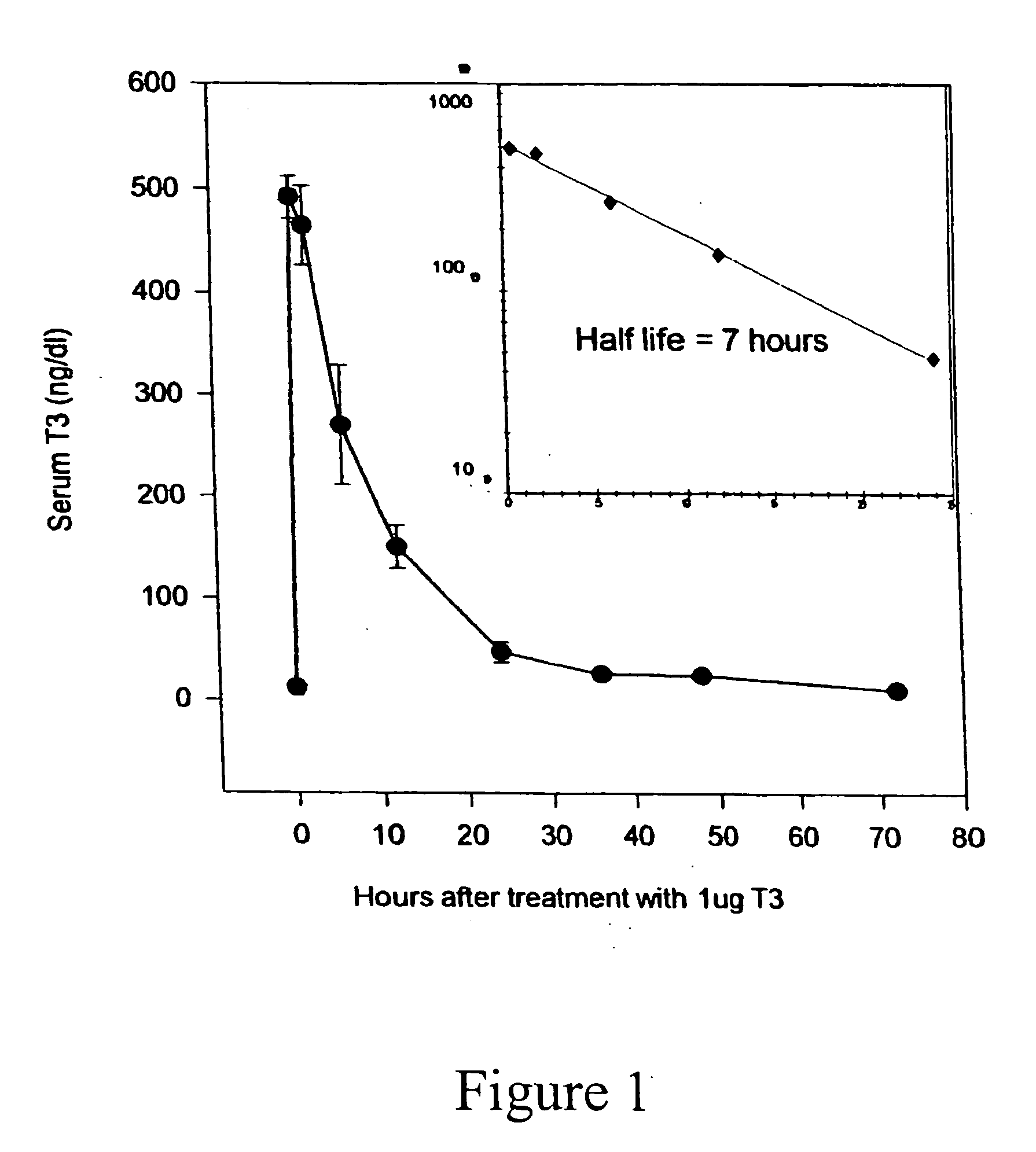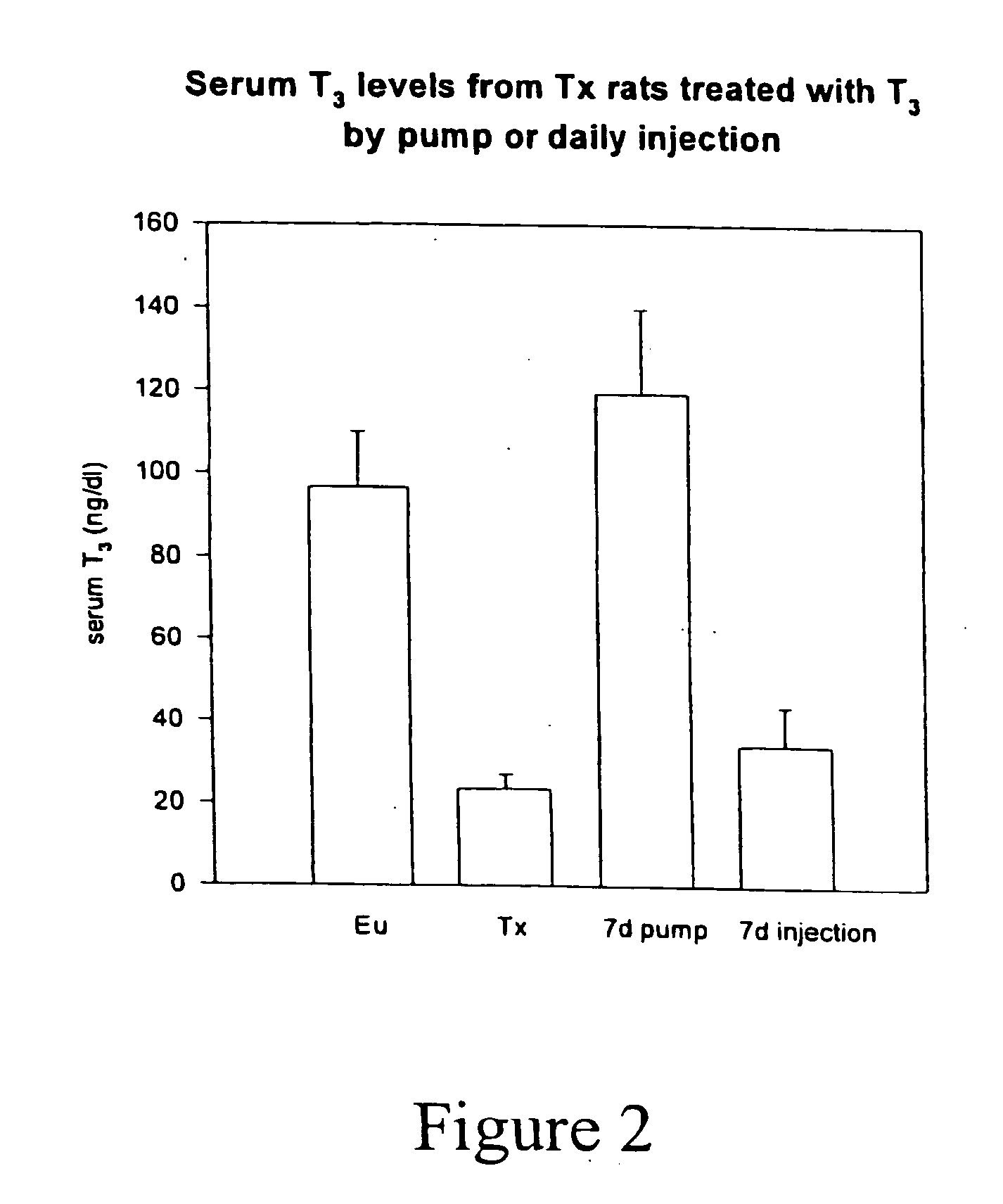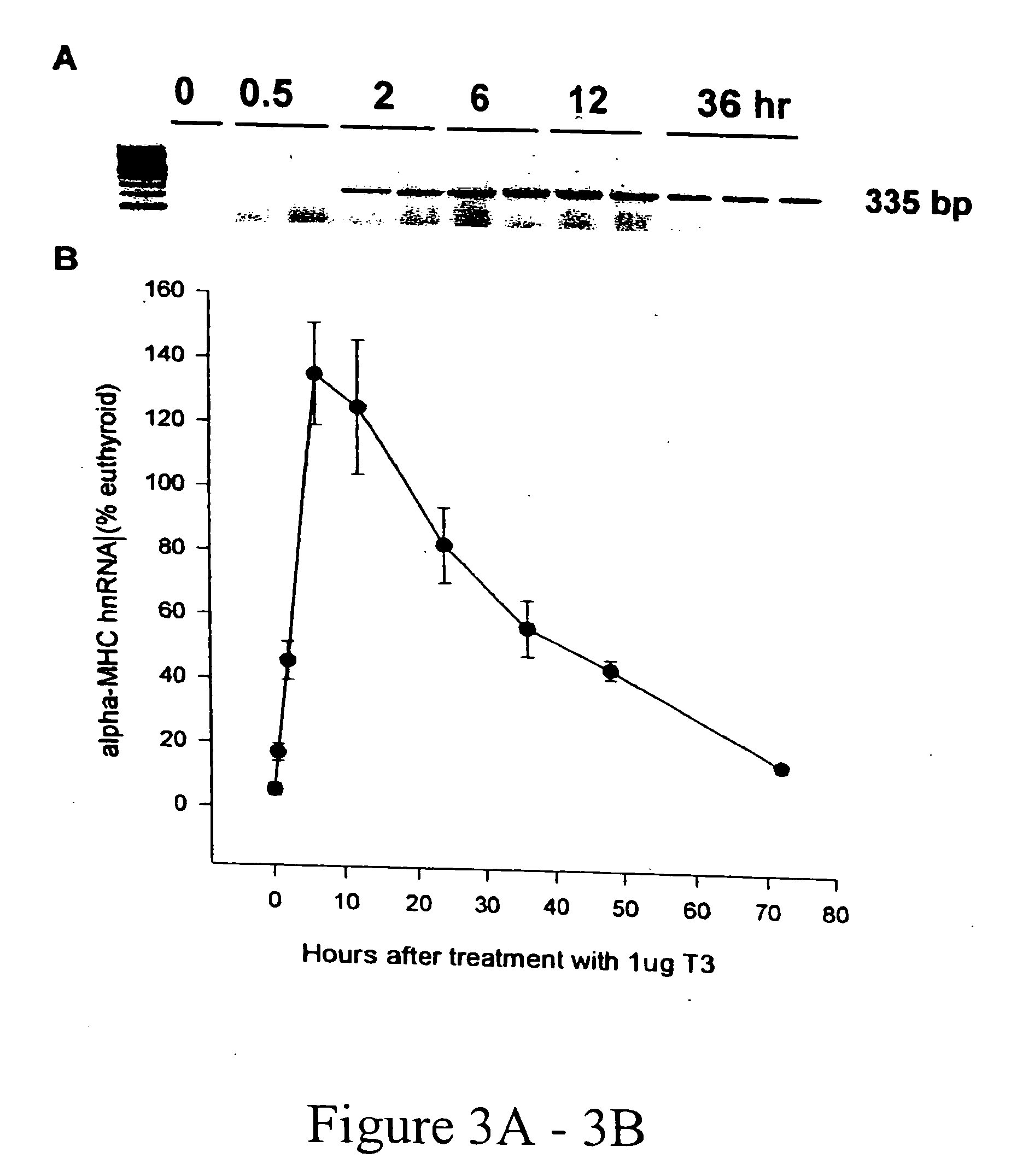Methods for treating hypothyroidism
a technology for hypothyroidism and treatment methods, applied in the field of treatment methods for hypothyroidism, can solve the problems of mental retardation, impede growth, inadequate synthesis of thyroid hormones, etc., and achieve the effect of avoiding or reducing deleterious side effects
- Summary
- Abstract
- Description
- Claims
- Application Information
AI Technical Summary
Benefits of technology
Problems solved by technology
Method used
Image
Examples
example 1
Serum Half-Life of T3 in the Rat.
[0043] Thyroidectomized rats were give a bolus injection of 1 μg T3. Measurement of the serum levels of T3 following the injection showed that T3 has a half-life of 7 hours (FIG. 1). This value is considerably shorter than the generally reported value of about 2½ days (Physicians' Desk Reference, 56th ed. Montvale, N.J.: Medical Economics Company, Inc., 2002, 1817).
example 2
Constant T3 Infusion, but not Bolus T3 Injections, Restores Serum Levels of T3 to Normal in Hypothyroid Subjects and Avoids Adverse Side Effects.
[0044] Normal rats have serum T3 levels averaging about 95 ng / dl (Eu in FIG. 2). Following infusion of T3 (0.042 μg / hr) in thyroidectomized rats for 7 days, serum T3 levels returned to normal or slightly above normal (7 d pump, FIG. 2). In contrast, daily injections of the same daily dose of T3 administered as a single bolus injection (1 μg T3 / day) in thyroidectomized rats failed to restore serum T3 levels to normal (7 d injection, FIG. 2). When measured after 3 days of treatment, daily bolus injections of T3 also produced unwanted cardiac hypertrophy, whereas the constant infusions of T3 did not, despite the fact that constant T3 infusion resulted in a return of serum T3 to normal levels whereas bolus T3 injections had a much smaller effect on serum T3 levels.
[0045] Serum T3 levels could still be restored to normal in hypothyroid subjec...
example 3
Constant T3 Infusion, but not Bolus T3 Injections, Restores Cardiac Function to Normal in Hypothyroid Subjects.
[0046] Expression of the cardiac- specific gene alpha-myosin heavy chain (alpha-MHC) is a sensitive indicator of normal cardiac function (Ojamaa et al. CVR&R 23: 20-6, 2002; Danzi et al. Am J Physiol Heart Circ Physiol. 284(6) :H2255-62, 2003; Danzi and Klein, Thyroid 12(6): 467-72, 2002; Ojamma and Klein, Endocrinology 132: 1002-6, 1993). In thyroidectomized rats, expression of alpha-MHC is greatly reduced (FIG. 4). As shown in FIG. 3, a bolus injection of 1 μg T3 produces a transitory effect on the heart as evidenced by a transient increase in alpha-MHC expression. However, similar to the effects on serum T3 levels, constant infusion of T3 (1 μg T3 / day) restores alpha-myosin HC expression to normal, whereas bolus injections of T3 do not (FIG. 4). Similarly, alpha-myosin HC expression is also restored to normal in animals receiving constant infusion of T3 at doses of 0.2...
PUM
| Property | Measurement | Unit |
|---|---|---|
| Time | aaaaa | aaaaa |
| Therapeutic | aaaaa | aaaaa |
| Body weight | aaaaa | aaaaa |
Abstract
Description
Claims
Application Information
 Login to View More
Login to View More - R&D
- Intellectual Property
- Life Sciences
- Materials
- Tech Scout
- Unparalleled Data Quality
- Higher Quality Content
- 60% Fewer Hallucinations
Browse by: Latest US Patents, China's latest patents, Technical Efficacy Thesaurus, Application Domain, Technology Topic, Popular Technical Reports.
© 2025 PatSnap. All rights reserved.Legal|Privacy policy|Modern Slavery Act Transparency Statement|Sitemap|About US| Contact US: help@patsnap.com



